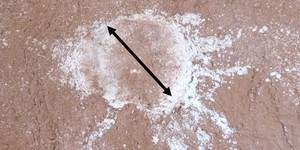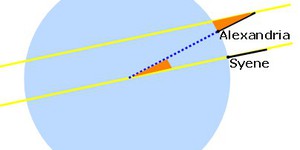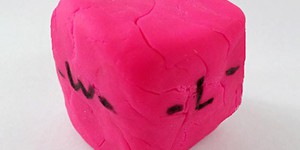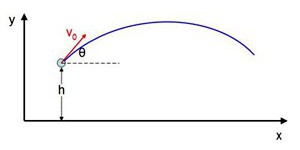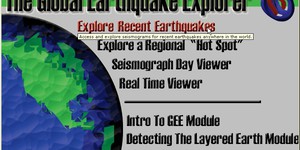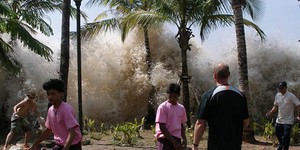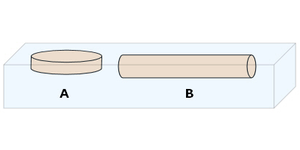Others Like “The Measure of Mercury: Analyzing Impact Craters on the Innermost Planet” (top 20 results)
|
You are right next to the basket and someone passes you the ball. Will you go for a direct shot or will you use the backboard and take a bank shot at the basket? Would different positions on the court give you a higher chance of making a shot using the backboard than others, even when keeping the distance from the hoop the same?
In this science project, you will build a scale model and test different positions on the court to determine if one results in a better chance of making a bank shot…
Read more
Have you ever heard someone say that the moon is made of cheese? Even though the craters on the surface of the moon resemble holes in Swiss cheese, we know that this common myth is not true. Find out how craters are formed and why they are different sizes by doing this simple science project.
Read more
How big a ruler would you need to measure the circumference of the Earth? Did you know that you can do it with a yardstick? (And you won't have to travel all the way around the world!)
Read more
Have you ever had fun making different figures or colorful creations using some Play-Doh? You can squish and stretch a single piece of Play-Doh® to make all sorts of shapes. How does changing the shape of a piece of Play-Doh affect its volume? In this science project, you will find out by testing how changing a piece of dough's shape affects its dimensions (length, width, and height), and how these changes are related to the dough's volume.
Read more
In physics class, you have probably rolled your eyes at some point after being assigned a "projectile motion" homework problem where you use equations to predict how a ball will move through the air. This experiment will show you just how fun that problem can be by using a real catapult to launch a ball and videotaping it as it flies along its path. Then, you will analyze the video and compare it to what the equations predicted. If you have ever wondered if those equations in your physics…
Read more
When an earthquake occurs, seismic shock waves travel out through the earth from the source of the event. The shock waves travel through the earth or along the Earth's surface, and can be recorded at remote monitoring stations. Some of the waves that travel through the earth are blocked or refracted by the Earth's liquid core, which means that monitoring stations located certain distances from the earthquake do not detect these waves. This creates a "seismic shadow" that you can use to…
Read more
A tsunami is a series of waves made in a body of water, like the ocean, that can cause serious destruction when they hit the coastline. In deep water, a wave can be just a few feet high and travel very fast. As it nears the coastline, and moves into shallower water, tsunamis usually slow down, but the wave height can grow to 100 feet! In this ocean science project, you will model a tsunami and investigate how wave velocity (speed) depends on water depth. Does it match the mathematical equation…
Read more
This science project presents an interesting puzzle. A disk of wood will float face-up; that is, with its circular cross-section parallel to the surface of the water. A long log of wood, however, floats on its side with the circular cross-section perpendicular to the surface of the water. If you think about it, disks and logs are both cylinders. Is there some intermediate length of cylinder that floats with the circular cross-section at a tilted angle? Try this experiment to find out!
Read more
If you have seen any of the "Star Wars" movies, then you probably remember when Jedi knights like Luke Skywalker and Obi-Wan Kenobi used "The Force" to push, pull, and even throw objects — including some helpless battle droids. Have you ever wished you could do that in real life? In this robotics project, you will build and program a LEGO® robot that you can push and pull using an "invisible force" — almost like a real Jedi! We make no promise that you will be taking down the…
Read more
Every criminal leaves behind evidence at the crime scene. The trick to catching the criminal is collecting all of the evidence and making sense of it. This is what the forensic expert does. In this science project you will be correlating the size of blood stains to the distance they fell, but do not get too grossed out. You will be doing it with fake blood. If you like figuring out mysteries, this is the science project for you!
Read more
|
Explore Our Science Videos
Making False-Color X-ray Images with NASA Files from the Chandra Observatory
Build an Infinity Mirror | Science Project
Line-Tracking Robot: BlueBot Project #3



